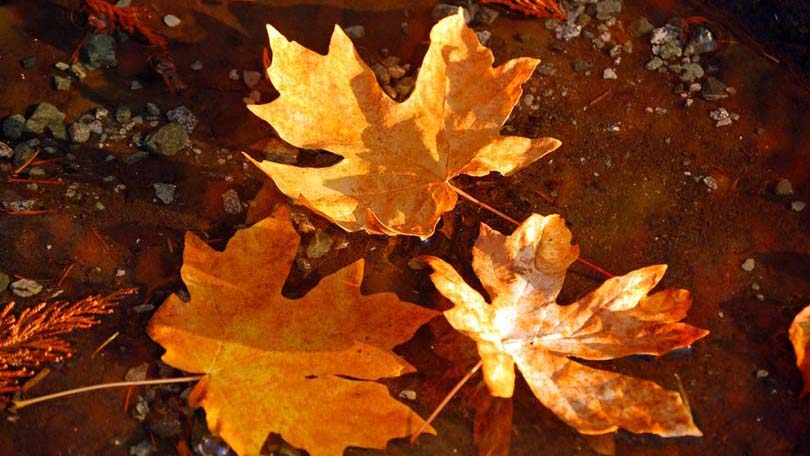
The vibrant colors of autumn make this time of year a favorite. You may be wondering why leaves change color. To understand why leaves change color, you need to understand how plants take in nutrients. Plants take water up through the roots and carbon dioxide from the air. They use sunlight to convert water and carbon dioxide into glucose. The plant uses glucose as a food source for both energy and growth. The process is known as photosynthesis. A chemical in the plant, called chlorophyll aids in the process of photosynthesis.
The chlorophyll in the plant is what gives leaves their green color. As summer turns to autumn, the days gradually grow shorter. This results in fewer hours of sunlight each day. Eventually there is not enough sunlight for photosynthesis. The trees go into a period of rest and live off the food they have stored during the summer months, much the way a bear lives off its food stores during the winter months.
What Causes the Variety of Colors in Leaves?
Leaves turn a variety of different colors in the autumn months. You may wonder why they turn different colors, rather than all turning orange, yellow or red. As the chlorophyll disappears from the leaves, the green color disappears. The orange and yellow colors are already in the leaves, but can’t be seen under the green. As the green fades, the yellow and orange can be seen.
The vibrant red and purple colors of the leaves give the autumn its intense color that make this season a favorite for many people. The red and purple colors are the result of glucose trapped in leaves. The glucose gets trapped after photosynthesis stops. The cooler temperatures in the night time hours cause the trapped glucose to turn red.
There is another purpose to the red and purple colors of the leaves. It actually helps the tree hold onto the leaves for a longer period. When the leaves remain on the tree for a longer period of time, it allows more of the nutrients to be used by the tree before the leaves finally do fall. These colors also protect the tree by lowering the freezing point. This provides some protection from frost.
The brown color on the tree is the result of waste products. The waste from trees is known as tannin. Tannins trapped in the leaves cause them to turn brown.
How Weather Affects the Colors
The intensity of the colors of autumn is affected by weather patterns. This explains the difference in the colors from year to year. The red and purple colors are enhanced by cool temperatures. If the autumn is very warm in the day and at night, the colors will not be as vibrant. This is because the glucose is not trapped in the leaves by the colder night time temperatures.
Moisture affects the color of the leaves as well. A succession of rainy and overcast days affects the color of the leaves. This increases the intensity of the color. A lack of moisture in the summer can result in colors that are less intense. If there is a drought in the summer, the colors will not be as vibrant as in a year when there is sufficient rain.
The best colors result from a weather pattern of warm, sunny days and cool nights. The warmth of the day and plenty of sunlight allow the tree to make more glucose. When the night brings cooler temperatures that remain above freezing the glucose is trapped inside the leaf. As the temperatures grow colder, the veins in the leaves constrict, which traps the glucose. This results in vibrant colors. For this reason, an autumn season with predominately warm days with plenty of sun and cool nights will give the best fall foliage.
